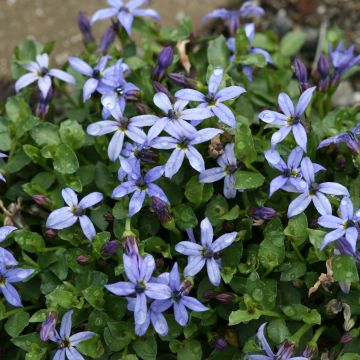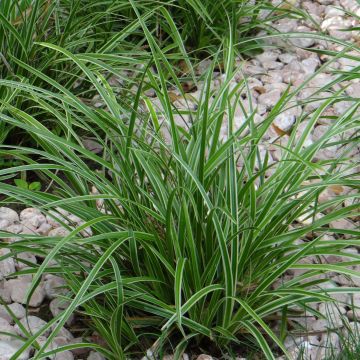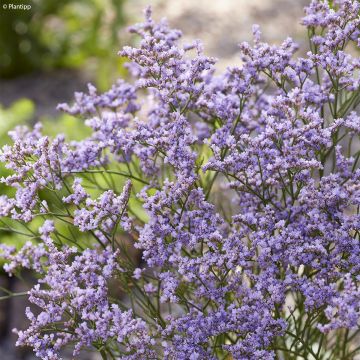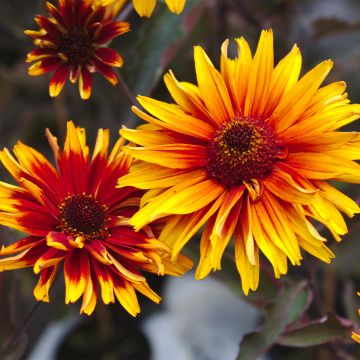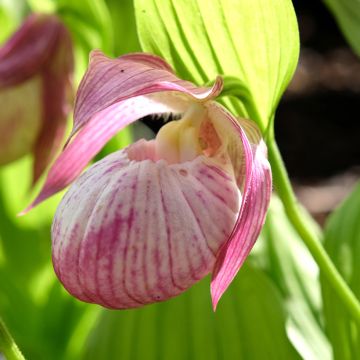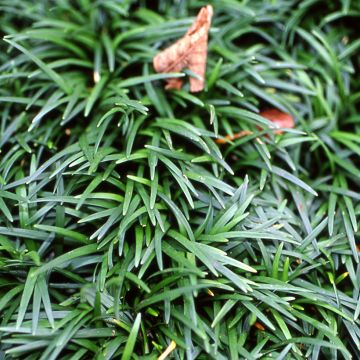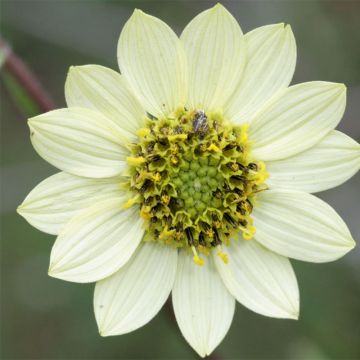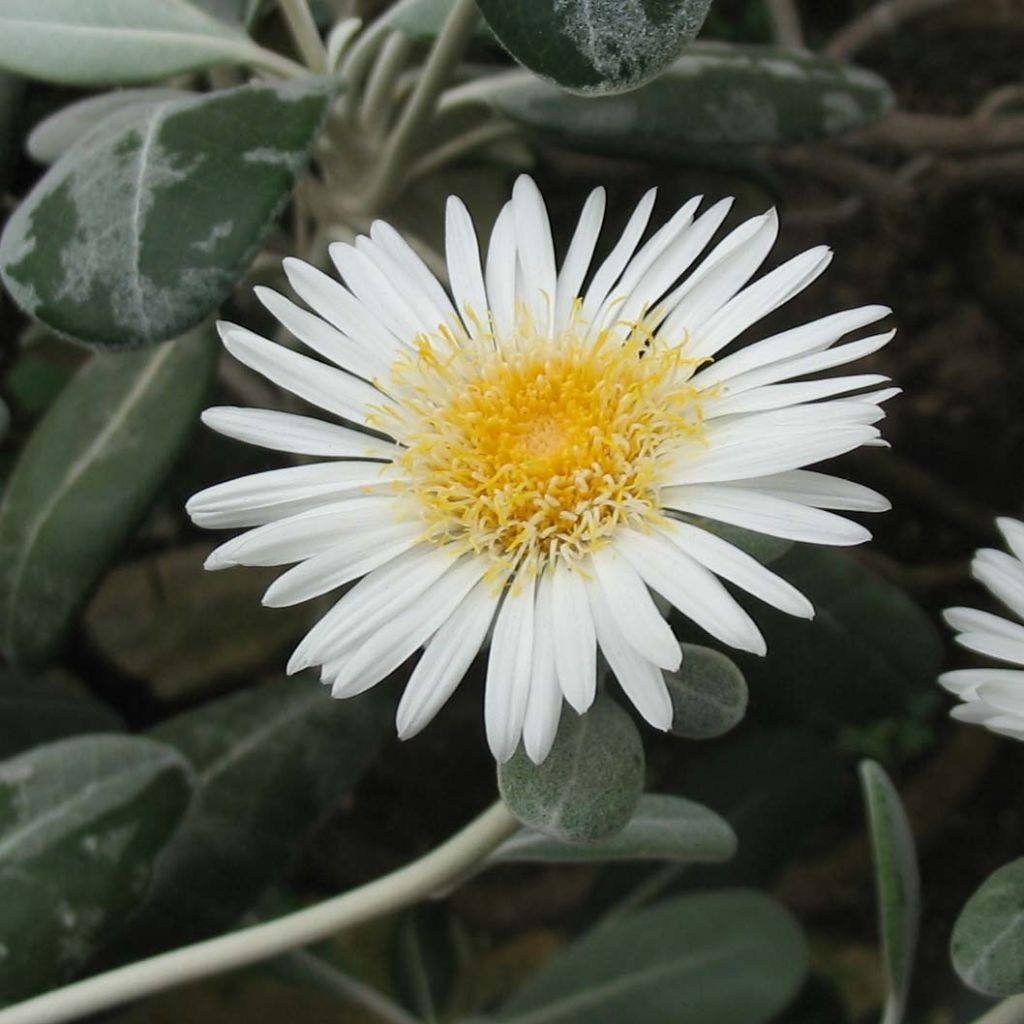

Pachystégia insignis Daizea - Marguerite de Nouvelle-Zélande.
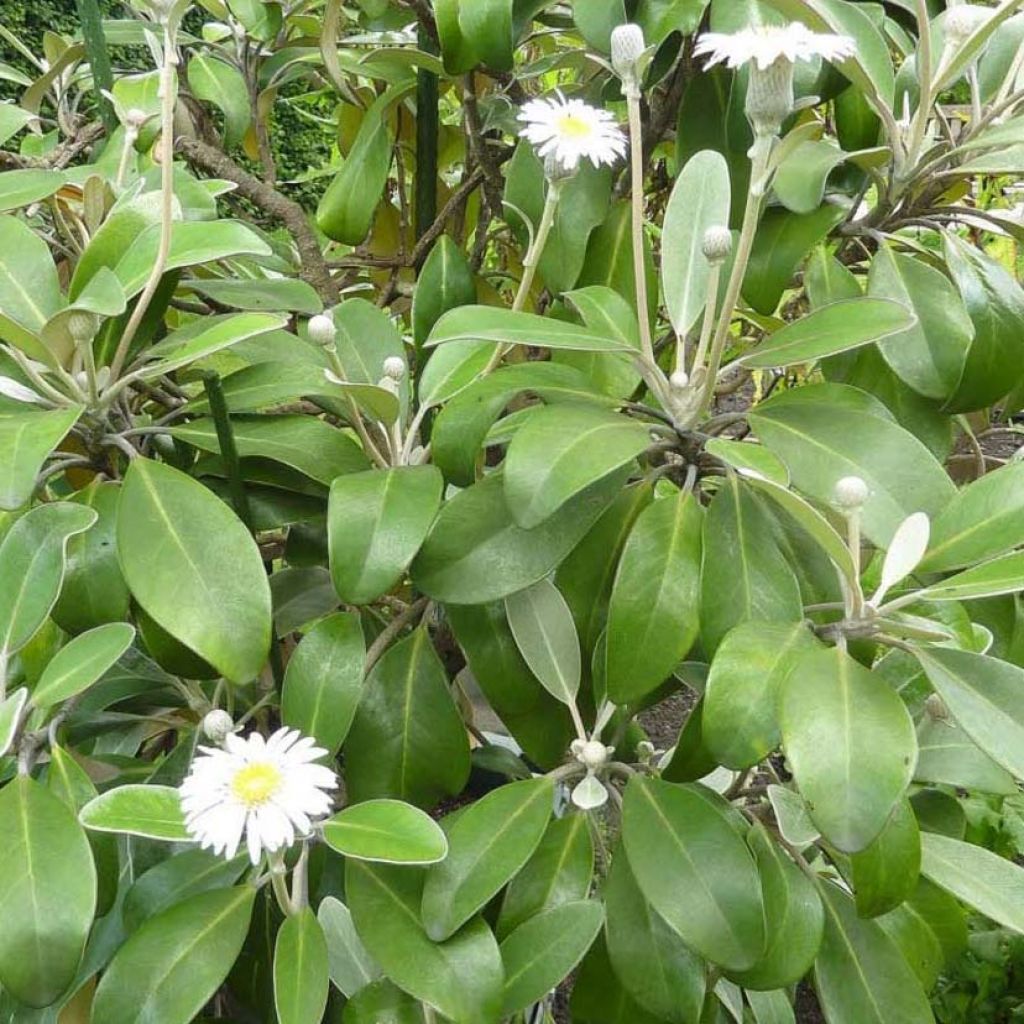

Pachystégia insignis Daizea - Marguerite de Nouvelle-Zélande.
Pachystegia insignis Daizea
Pachystégia insignis Daizea ® Hardec
Marlborough Rock Daisy
Very beautiful young plant, currently reaching a metre in diameter, planted under a Scots pine in full sun in the afternoon. It tolerates drought very well, no watering last summer.
Louis, 23/04/2019
Special offer!
Receive a €20 voucher for any order over €90 (excluding delivery costs, credit notes, and plastic-free options)!
1- Add your favorite plants to your cart.
2- Once you have reached €90, confirm your order (you can even choose the delivery date!).
3- As soon as your order is shipped, you will receive an email containing your voucher code, valid for 3 months (90 days).
Your voucher is unique and can only be used once, for any order with a minimum value of €20, excluding delivery costs.
Can be combined with other current offers, non-divisible and non-refundable.
Home or relay delivery (depending on size and destination)
Schedule delivery date,
and select date in basket
This plant carries a 12 months recovery warranty
More information
We guarantee the quality of our plants for a full growing cycle, and will replace at our expense any plant that fails to recover under normal climatic and planting conditions.

Would this plant suit my garden?
Set up your Plantfit profile →
Description
Pachystegia insignis Daizea is a bushy daisy from New Zealand that is quite unique and very beautiful. It is moderately hardy and perfectly suited to coastal areas. It captivates with its beautiful evergreen grey-silver foliage, covered in white felt in spring, and its long spring to summer flowering period. Its flowers are heads, similar to those of white daisies with golden yellow hearts. This large perennial prefers a sunny exposure and well-drained soil, not too dry in summer to support its flowering. It can be welcomed in a large pot on the terrace to be stored in a cold region, or in a well-drained bed in a mild maritime or oceanic climate.
Pachystegia insignis, also known as Olearia insignis, is a perennial shrub of the Asteraceae family, just like sunflowers and chrysanthemums. It is a botanical species native to the northeast coast of the South Island in New Zealand. It can be found growing on steep sandstone cliffs, exposed to the sea, directly facing the spray, braving storms and relatively dry and hot summers.
The recently obtained cultivar 'Daizea', developed by INRA, stands out mainly for its beautiful foliage and strongly white, grey, and silver tinted flower buds. The plant grows into a ramified bush, reaching a height of 1m (3ft) to 1.20m (4ft) in all directions. The persistent foliage consists of ovate to elliptical, entire, thick, and leathery leaves covered in a grey down, more or less light depending on the humidity of the soil and air. They measure 8 to 20cm (3 to 8in) long and have a felted underside. The spring shoots are covered in a beautiful white down. Flowering takes place from May to July, earlier or later depending on the climate, and lasts approximately 2 months. The flowers are heads measuring 5 to 6cm (2in) in diameter, composed of a double row of white ligulate florets surrounding a golden yellow centre. They are followed by the formation of fruits resembling small beige to greyish pompoms.
Plant Olearia and Pachystegia in a seaside garden, as they withstand wind and spray perfectly and particularly appreciate sandy or humus-rich, and slightly calcareous soils. The long summer drought in the Mediterranean, and especially the often highly calcareous soils in this region, are less well tolerated. They are small flowering shrubs, typically characterized by their beautiful persistent foliage and generous flowering, which make a statement in the garden and impress visitors. They can be associated with myrtles, rockroses, Nerium, Melaleuca, Callistemons, and Leptospermum in large persistent and flowering beds for much of spring and summer. They also thrive in large pots on a sheltered terrace or balcony. Gardeners in more continental regions, where winters are harsh and humid, should bring them indoors to a lightly heated greenhouse.
Report an error about the product description
Pachystegia insignis Daizea in pictures


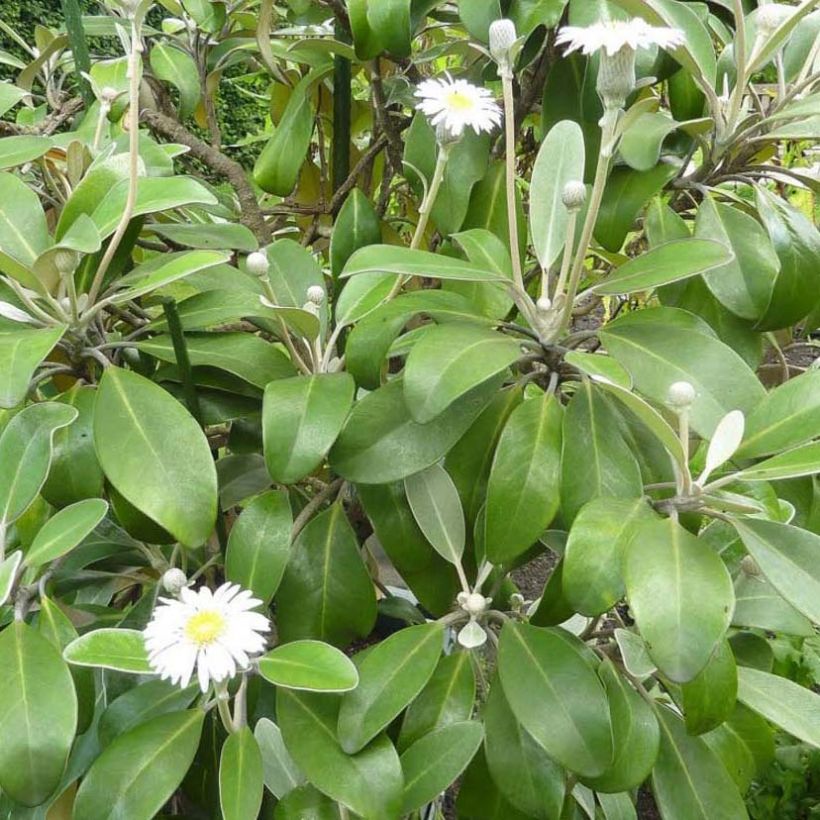

Flowering
Foliage
Plant habit
Botanical data
Pachystégia
insignis
Daizea ® Hardec
Asteraceae
Marlborough Rock Daisy
Cultivar or hybrid
Other Perennials A to Z
View all →Planting and care
Plant Pachystegia insignis Daizea in spring or autumn, depending on the mildness of your climate. Planting in early autumn is preferable in warmer and drier climates in summer. Plant it in light, loose, sandy or humus-rich soil, even rocky or stony, occasionally moist to dry, not too rich, but definitely well-drained. This plant does not tolerate excess limestone and arid conditions, and does not tolerate long periods of summer drought that hinder flowering. However, it tolerates strong winds and sea spray well. It thrives in a sunny exposure, or possibly semi-shaded. It tolerates temperatures down to -12°C, but in perfectly dry soil. A slight protection such as a winter veil is necessary in the garden, beyond -8°C.
Regularly remove faded flowers, followed by a quantity of small light brown tufts, and lightly prune the plant in early spring to promote branching.
Cultivation in pots: prepare a mixture of garden soil, perlite, leaf compost, and coarse sand. Fill a 30 to 50cm (12 to 20in) diameter pot, with the bottom lined with a thick layer of drainage composed of clay balls, pumice, or broken terracotta shards. Follow watering in summer and provide slow-release fertilizer in spring. Repot every 2 years in a slightly larger container. Store the plant frost-free in winter and reduce watering.
Multiplication by cuttings of stems after flowering.
Pests and diseases: this plant fears waterlogged and poorly drained soils. No specific diseases are known under our climates.
Planting period
Intended location
Care
Planting & care advice
-
, onOrder confirmed
Reply from on Promesse de fleurs
Similar products
Haven't found what you were looking for?
Hardiness is the lowest winter temperature a plant can endure without suffering serious damage or even dying. However, hardiness is affected by location (a sheltered area, such as a patio), protection (winter cover) and soil type (hardiness is improved by well-drained soil).

Photo Sharing Terms & Conditions
In order to encourage gardeners to interact and share their experiences, Promesse de fleurs offers various media enabling content to be uploaded onto its Site - in particular via the ‘Photo sharing’ module.
The User agrees to refrain from:
- Posting any content that is illegal, prejudicial, insulting, racist, inciteful to hatred, revisionist, contrary to public decency, that infringes on privacy or on the privacy rights of third parties, in particular the publicity rights of persons and goods, intellectual property rights, or the right to privacy.
- Submitting content on behalf of a third party;
- Impersonate the identity of a third party and/or publish any personal information about a third party;
In general, the User undertakes to refrain from any unethical behaviour.
All Content (in particular text, comments, files, images, photos, videos, creative works, etc.), which may be subject to property or intellectual property rights, image or other private rights, shall remain the property of the User, subject to the limited rights granted by the terms of the licence granted by Promesse de fleurs as stated below. Users are at liberty to publish or not to publish such Content on the Site, notably via the ‘Photo Sharing’ facility, and accept that this Content shall be made public and freely accessible, notably on the Internet.
Users further acknowledge, undertake to have ,and guarantee that they hold all necessary rights and permissions to publish such material on the Site, in particular with regard to the legislation in force pertaining to any privacy, property, intellectual property, image, or contractual rights, or rights of any other nature. By publishing such Content on the Site, Users acknowledge accepting full liability as publishers of the Content within the meaning of the law, and grant Promesse de fleurs, free of charge, an inclusive, worldwide licence for the said Content for the entire duration of its publication, including all reproduction, representation, up/downloading, displaying, performing, transmission, and storage rights.
Users also grant permission for their name to be linked to the Content and accept that this link may not always be made available.
By engaging in posting material, Users consent to their Content becoming automatically accessible on the Internet, in particular on other sites and/or blogs and/or web pages of the Promesse de fleurs site, including in particular social pages and the Promesse de fleurs catalogue.
Users may secure the removal of entrusted content free of charge by issuing a simple request via our contact form.
The flowering period indicated on our website applies to countries and regions located in USDA zone 8 (France, the United Kingdom, Ireland, the Netherlands, etc.)
It will vary according to where you live:
- In zones 9 to 10 (Italy, Spain, Greece, etc.), flowering will occur about 2 to 4 weeks earlier.
- In zones 6 to 7 (Germany, Poland, Slovenia, and lower mountainous regions), flowering will be delayed by 2 to 3 weeks.
- In zone 5 (Central Europe, Scandinavia), blooming will be delayed by 3 to 5 weeks.
In temperate climates, pruning of spring-flowering shrubs (forsythia, spireas, etc.) should be done just after flowering.
Pruning of summer-flowering shrubs (Indian Lilac, Perovskia, etc.) can be done in winter or spring.
In cold regions as well as with frost-sensitive plants, avoid pruning too early when severe frosts may still occur.
The planting period indicated on our website applies to countries and regions located in USDA zone 8 (France, United Kingdom, Ireland, Netherlands).
It will vary according to where you live:
- In Mediterranean zones (Marseille, Madrid, Milan, etc.), autumn and winter are the best planting periods.
- In continental zones (Strasbourg, Munich, Vienna, etc.), delay planting by 2 to 3 weeks in spring and bring it forward by 2 to 4 weeks in autumn.
- In mountainous regions (the Alps, Pyrenees, Carpathians, etc.), it is best to plant in late spring (May-June) or late summer (August-September).
The harvesting period indicated on our website applies to countries and regions in USDA zone 8 (France, England, Ireland, the Netherlands).
In colder areas (Scandinavia, Poland, Austria...) fruit and vegetable harvests are likely to be delayed by 3-4 weeks.
In warmer areas (Italy, Spain, Greece, etc.), harvesting will probably take place earlier, depending on weather conditions.
The sowing periods indicated on our website apply to countries and regions within USDA Zone 8 (France, UK, Ireland, Netherlands).
In colder areas (Scandinavia, Poland, Austria...), delay any outdoor sowing by 3-4 weeks, or sow under glass.
In warmer climes (Italy, Spain, Greece, etc.), bring outdoor sowing forward by a few weeks.
































